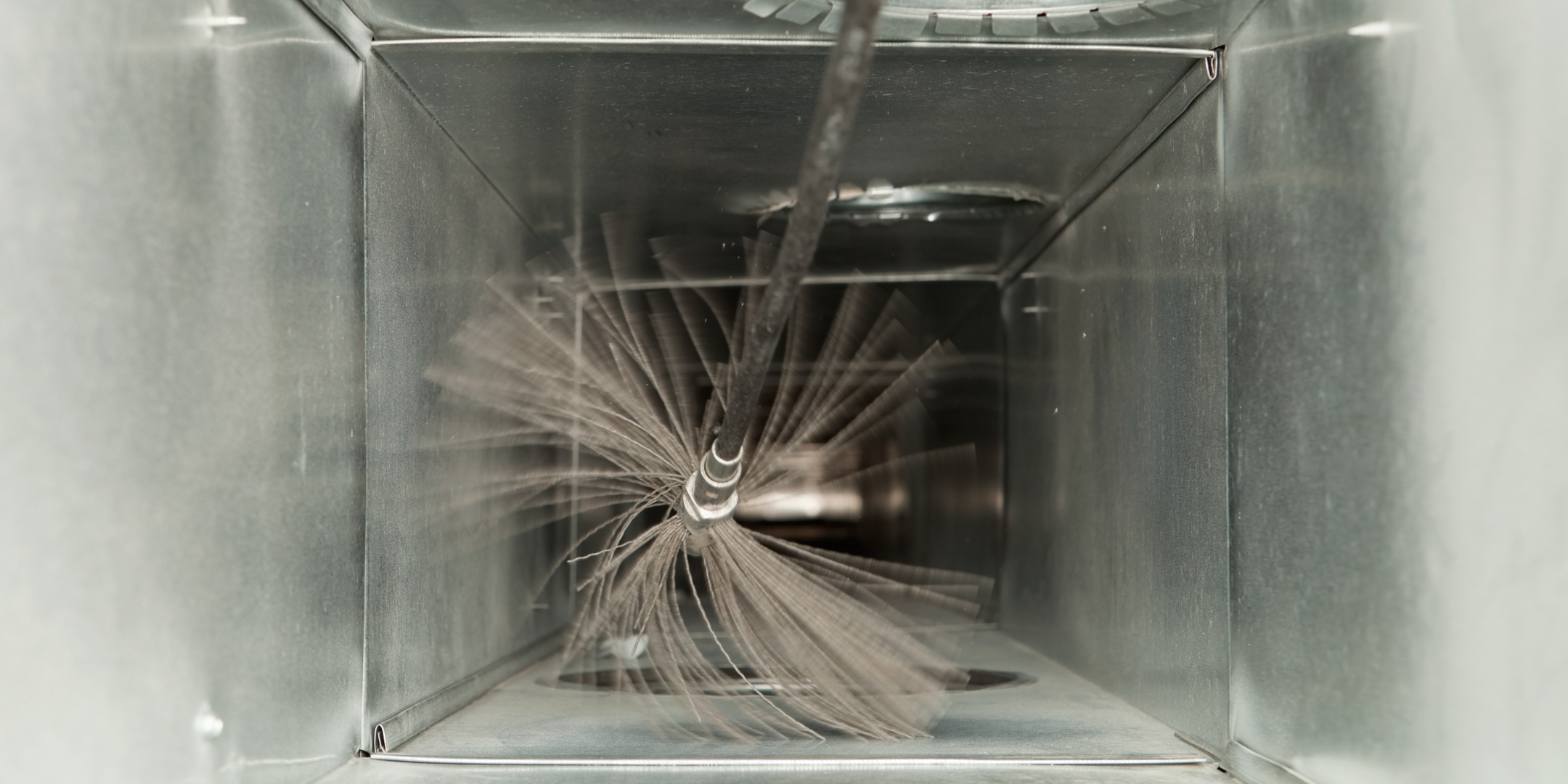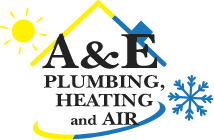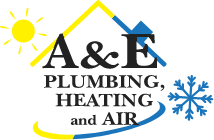Duct Cleaning vs. Aeroseal: Which One Do You Actually Need? (Or Both?)
March 27th, 2025
5 min read
By Daphne Hunt

You want your home to feel comfortable, your air to stay clean, and your energy bills to make sense— but right now, that’s not what’s happening. Maybe certain rooms are always too hot or too cold. Maybe there’s dust no matter how often you clean. Or maybe you’re just tired of your system working overtime for underwhelming results.
but right now, that’s not what’s happening. Maybe certain rooms are always too hot or too cold. Maybe there’s dust no matter how often you clean. Or maybe you’re just tired of your system working overtime for underwhelming results.
We get it. After helping homeowners like you for over 16 years, we’ve seen firsthand how confusing it can be to figure out what your HVAC system actually needs. Is it duct cleaning? Is it Aeroseal? Is it both?
By the time you finish this article, you’ll understand what each service does, how to spot the signs you might need them, and how to make the right choice for your home. No pressure—just clear answers.
What Is Duct Cleaning? (And What It Actually Solves)
Your ductwork is out of sight—but it shouldn't be out of mind. Over time, those hidden airways turn into a collection zone for everything you’d rather not breathe in: dust, pet dander, pollen, leftover construction debris, and who knows what else from the previous owners.
Professional duct cleaning isn’t just about removing grime—it’s about reclaiming your home’s air. Using a powerful vacuum system and rotating brush tools, the service scrubs the inside of your ductwork clean, kind of like power-washing the lungs of your home.
Homeowners typically schedule duct cleaning when:
- There’s visible dust building up around vents—even after you’ve just cleaned

- Allergies or asthma symptoms are worse indoors than out
- The HVAC system seems to run constantly but doesn’t keep you comfortable
- You’ve just moved in and want a clean, healthy starting point
It’s not just cosmetic. When done right, duct cleaning can:
- Improve airflow and help your system run more efficiently
- Reduce allergens and dust circulating in your home
- Lower strain on your HVAC equipment—potentially extending its life
- Give you a visual confirmation of what’s been hiding in your vents
If you’ve never had your ducts cleaned, or it’s been more than five years, it might be time. Because clean ducts don’t just feel better—they help everything else in your home work better, too.
What Is Aeroseal? (And What It Actually Solves)
Duct cleaning is great for clearing out buildup—but what if the air you’re paying to heat or cool never even makes it to the rooms you actually use?
makes it to the rooms you actually use?
That’s where Aeroseal Duct Seal comes in. It tackles a different problem: air leakage. Most homes lose 20–30% of conditioned air through cracks, gaps, and loose connections in the ductwork—especially if those ducts run through attics, crawlspaces, or inside walls. That’s air you’re paying for, going exactly where you don’t need it.
Aeroseal is a patented technology that seals those leaks from the inside out—without tearing into walls, ceilings, or insulation. It’s one of the only ways to truly stop air loss and restore your HVAC system’s full efficiency.
From Start to Finish: The Aeroseal Process
- Prepping the system: Technicians block off all vents and registers to isolate the ductwork.
- Measuring the damage: A computer-controlled test measures how much air is leaking from your system. (This is usually when people’s jaws drop.)
- Sealing from the inside: A specialized machine fills your ducts with a fine, safe, unscented mist. As the air escapes through leaks, the particles cling to the edges of the gaps and build up, creating an airtight seal—even in joints and cracks you can’t see or reach.
- Final testing and reporting: After sealing, the system is tested again to measure improvement. You’ll get a printed report showing the “before” and “after” numbers—proof that the leaks were found and fixed.
How Aeroseal Makes a Difference
Because you don’t have to guess whether it worked—you’ll see the numbers. In most homes, leakage drops from 30–40% down to under 5%. And while the fix is invisible to the eye, you’ll feel the difference in more even temperatures, a quieter system, and lower energy bills.
And since sealed ducts don’t pull in attic or crawlspace air (which can carry allergens, dust, or insulation fibers), you’re breathing cleaner air, too.
If your HVAC system seems to be working overtime—and you’re still not comfortable—Aeroseal is one of the few services that can actually address that head-on. No remodeling, no guesswork, no “we think it helped.” Just tested, verified, sealed ductwork—and a home that works the way it should.
Duct Cleaning vs. Aeroseal: Key Differences
Here’s a breakdown of how the two services compare:

When to Clean, Seal, or Do Both with Your Ducts
Duct cleaning and Aeroseal each solve very different problems. You may only need one—but in some cases, doing both is the smartest way to fully restore your system. Here's how to know what makes sense for your home.
Choose duct cleaning if:
- Your home is older or hasn’t had it done in years. Dust, dander, and debris collect over time, especially in homes that haven’t been maintained regularly.
- There’s visible dust around vents or on furniture. If you’re constantly wiping things down, dirty ducts may be recirculating it.
- You or someone in the home has allergies or asthma. Duct cleaning can reduce airborne triggers and help improve indoor air quality.
- You’ve done remodeling or just moved in. Construction dust, drywall particles, and unknown buildup from previous owners are common—and worth removing.
Go with Aeroseal if:
- You have uneven heating or cooling. Some rooms staying too hot or too cold is a red flag for duct leaks.
- Your energy bills are higher than expected. If your system is losing air into crawlspaces or attics, it’s wasting energy—and money.
- Your system runs constantly but feels ineffective. It may be working harder just to compensate for air loss.
- Your ducts run through unconditioned spaces. These areas make leakage even more costly and disruptive to comfort.
Seal and clean if:
- You want better air and efficiency. Cleaning removes allergens; sealing stops leaks. Together, they
 reset your system.
reset your system. - You’re replacing or upgrading your HVAC system. Doing both ensures your new investment performs as efficiently as possible.
- You’re preparing your home for sale. A cleaned and sealed duct system adds to the overall health and value of the home.
- You want long-term peace of mind. Doing both is the best way to ensure your system is clean, airtight, and working the way it should.
If you're unsure where to start, scheduling a duct cleaning with a system test is a low-commitment way to evaluate your ductwork and determine if sealing is worth it.
What Most Homeowners Do (And Why It Makes Sense)
Here’s a typical path: People start with duct cleaning because it’s quicker, less expensive, and solves common comfort issues. During that appointment, a technician can also test your system’s air loss. If you choose to clean your ducts with A&E and the test shows a significant amount of leakage, you have the option to move forward with Aeroseal within 90 days—and apply the cost of the cleaning to the sealing.
It’s a low-pressure way to test the waters (and your ducts) before committing to the bigger service.
Your Next Step Toward Cleaner, Smarter Air
You now know what duct cleaning actually does (removes buildup), what Aeroseal is all about (seals costly leaks), and how each one tackles different—but equally frustrating—issues. Whether you’re aiming for cleaner air, better energy efficiency, or both, you’ve got the info to move forward confidently.
leaks), and how each one tackles different—but equally frustrating—issues. Whether you’re aiming for cleaner air, better energy efficiency, or both, you’ve got the info to move forward confidently.
And no, you don’t need to be an HVAC expert. You just need to take the first step. If you're still unsure what your system needs, start with a duct cleaning and ask for a quick leakage test. It’s low-commitment, high-reward—and gives you the insight to decide what (if anything) comes next.
Ready to take control of both? Schedule your service call now and we’ll help you get started with a simple duct cleaning and leakage test—so you can breathe easy knowing exactly what your system needs next.
Daphne Hunt holds a bachelor's degree in English and Mass Communication and has a lifelong passion for writing. She thrives on using her skills to craft compelling pieces that inform, inspire, and connect with readers.
Topics:


